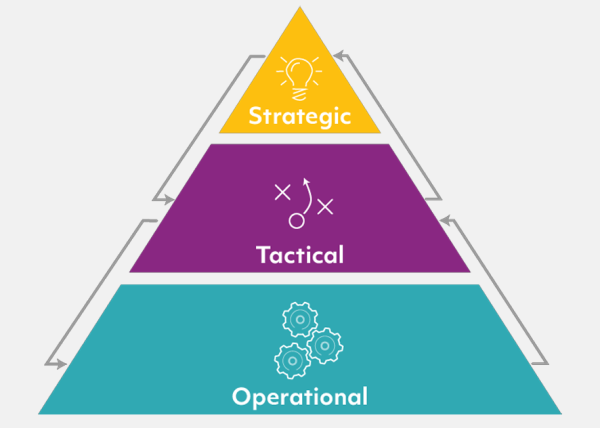Digital Twins for Sustainable Growth
The sustainability race is on. As the global economy walks the tightrope to balance increased demands with ongoing constraints, the pressure to do more with less is scaling up.
The last few years has seen a perfect storm of pressure being placed on organisations, forcing efficiencies like never before.
Global shortages of skilled labour, supply chain disruptions, energy shortages, a rising cost of capital, legislative shifts towards a low carbon economy – these are just some of the factors impacting not just a business’s ability to grow, but its ability to undertake business as usual.
As we innovate and manufacture new solutions into the future, bottlenecks in the necessary resources are inevitable.
Navigating this environment is forcing businesses to be more diligent than ever to make decisions that deliver sustainable outcomes.
Increasing fluctuations in resource availability met with surges in customer demand means using every resource wisely has fast become a business imperative.
Today's decisions are tomorrow's reality.
Forward-thinking companies are shifting to a model that works within planetary boundaries by centering on wiser use of existing resources.
While this may seem self-evident, with most organisations already exploring resource optimization in some form, the challenge is yet to be solved systemically.
This is largely due to the complex and multi-faceted nature of how resources are managed across every layer of every business.
Unlocking sustainable growth in our changing world relies on wise decision making at both macro and micro levels.
Despite the frequent and simultaneous nature of decision making, it is often done in isolation using different frames of reference.
At a high level, organisational decisions tend to fall into three main types – strategic, tactical, and operational.
All these decision types need a common set of principles applied at a whole of system level, to make a meaningful contribution to resource optimization. This requires:
• A shared truth, from the definition of organisational goals and metric calculations, through to current state asset data to support investment decisions, through to work instructions outlining how a specific task should be performed in lines with those goals and metrics;
• Feedback loops embedded across and between all decision types, to enable a holistic approach to be used organisation wide; and
• Targeted information to support the decision maker that is specific, precise, and easily understood.
Organisational Decision Making |
|
Figure 1: Decision types across an organisation |
|
|
|
|
Figure 2: Conceptual model for Digital Twins |
Digital twins are a fast-emerging technological enabler for ‘whole of system’ decision making. Digital twins are virtual representations of real word objects, that look like, behave like, and are connected to their physical counterpart. Primarily a decision-making tool by design, the application of digital twins is as broad and varied as the types of organisational decisions required. • A simple, shared ‘single pane of glass’ view of the data and systems that support an asset. Organisations can create, maintain and use this as a version of truth to integrate and align complex asset information; and support a seamless flow of data through various types of decisions during the asset lifecycle |
Every resource used wisely.
|
As a ‘whole of system’ decision making tool, benefits from using a digital twin are significantly amplified the more it is used within the organisation, across multiple resource types and multiple decision levels. |
One way to narrow down to a priority focus area is to consider two key questions: • Constraints on which resource type are placing the most pressure on your organisation? • Which decision level has the greatest impact on both financial and non-financial performance within your organisation? While each organisation will have different answers to these questions, Figure 3 outlines the most common areas our digital twin clients find useful to focus on, each of which can provide a meaningful impact on resource optimization to support more sustainable outcomes. |
||
| Strategic | Tactical | Operational | |
| People pressures | Increased workforce resilience | Safer working procedures | Improved efficiency and effectiveness of people |
| Asset pressures | Enhanced risk and investment management | Enhanced planning and preparedness for disruption | Improved overall equipment effectiveness |
| Environmental pressures | Enhanced business sustainability | Reduced carbon emissions | Optimised resource (e.g. energy, water, materials) |
Figure 3: Example applications of digital twins by resource type
 |
|
| CASE STUDIES | |
|
|
Strategic decision support As part of a strategic review, a digital twin of asset performance and condition data enabled our government client to direct investment towards infrastructure that would have the greatest impact to their strategic outcomes, enabling them to better utilise their existing infrastructure resources. Overall Equipment Effectiveness (OEE) A 20-30% OEE drop was impacting our manufacturing client each time there was a personnel disruption to their usual operations team. By using a digital twin of the production lines asset data, they were able to equip the incoming personnel with the right information at the right time, enabling the team to achieve the required OEE levels |
|
Successful implementation of digital twins for sustainable growth begins with a clear starting point, cutting through the noise to focus on understanding what critical resources exist and where better decisions will improve resource optimisation. By leveraging digital twins for their full potential, organisations can harness a powerful tool to systemically use their resources more wisely, building resilience to macroenvironmental pressures, and supporting sustainable growth into the future. |
 |
Get in touch with our team today! |
|
For over 100 years, Beca have been helping transform our world. Today, we are on a mission to creatively solve the problems that matter; using our understanding of industries and assets, and the operating and engineering technologies that support those assets. Drawing on our rich engineering and project delivery heritage, we created BEYON: a digital twin platform for complex asset information that enables you to use every resource wisely and deliver tangible business outcomes, every day. |
 |
Mari Huusko |
|
Stephen Witherden |


